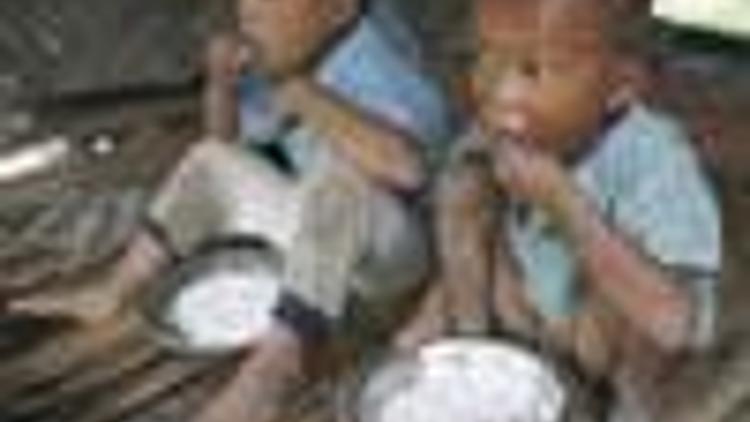Forty percent of Myanmar dead are children: aid group
Güncelleme Tarihi:

At least 40 percent of those killed in Myanmar’s cyclone were children and hundreds more have lost their parents, a leading charity said on Tuesday as U.N. humanitarian agency said the number of dead ranged from 60,000 to 102,000.
Part of the reason for the cyclones devastating toll on young people is simple demographics, with 40 percent of
"To be honest its highly likely to be more than 40 percent, because children are less likely to withstand these kinds of storm surges," Collinson told AFP. "Children are that much more vulnerable," he added. �
Survivors of the cyclone, which left at least 62,000 dead or missing, have told AFP horrific stories of clinging to tree branches as the storm surge swept away their villages, sending waves crashing over the tops of trees.
Parents saw their children ripped from their arms by the powerful currents. Among the children who survived, hundreds have been separated from their parents or become orphans, Collinson said.
"We’ve heard reports of 300 children living in a camp that have been separated" from their parents, said Kathryn Rowe, also of Save the Children. "So they may have extended families there but they have been separated from their parents," she added.
In the hardest-hit regions of the
The United Nations estimates that one fifth of children living in the disaster zone are now suffering from diarrhoea. Without access to clean drinking water, diarrhoea can prove lethal in emergencies such as this.
In addition to the displacement caused by the storm, the latest UN report on the crisis said officials had received reports of entire families being forcibly moved from their villages to other parts of the country unaffected by the cyclone.
The UN children’s fund UNICEF says 3,000 schools were wiped out by the cyclone, leaving 500,000 children without classrooms as holidays are set to end early next month. The agency said it was working to create makeshift schools in relief camps, in the hope of giving children a semblance of normal life.
Now, the greatest risk to children is infectious diseases such as cholera, diarrhoea, dysentery, dengue fever and malaria caused by flooding and a lack of clean water, the agency said.
A stream of the aid flights have already landed in
Two more American aid flights were due to leave for cyclone-hit
Local staff for international relief agencies are stretched to breaking point and facing tighter restrictions on their ability to deliver the trickle of foreign aid flowing in to 1.5 million survivors facing hunger and disease.
Tens of thousands of people throughout the delta are crammed into monasteries, schools and other buildings after arriving in towns that were on the breadline even before the disaster. Lacking food, water and sanitation, they face the threat of killer diseases such as cholera. Heavy rain was forecast for the delta this week, threatening more misery for survivors.
The World Food Program said it was able to deliver less than 20 percent of the 375 tons of food a day it wanted to move into the flooded delta.
The junta has welcomed "aid from any nation" but has made it very clear it does not want outsiders distributing it in the areas worst hit by Cyclone Nargis, which struck 11 days ago.
U.S. President George W. Bush condemned the junta for failing to act more quickly to accept international help, saying "either they are isolated or callous," speaking after the first U.S. military aid flight to Myanmar on Monday,
At the United Nations in
The United Nations said its top representative in
In its latest assessment, its humanitarian agency said between 1.2 million and 1.9 million people were struggling to survive and the number of dead ranged from 60,000 to 102,000.
The cyclone raged through an area that is home to nearly half of the country's 53 million people, as well as its main rice-growing region. About 5,000 sq kms (1,930 sq miles) of land remains under water.

